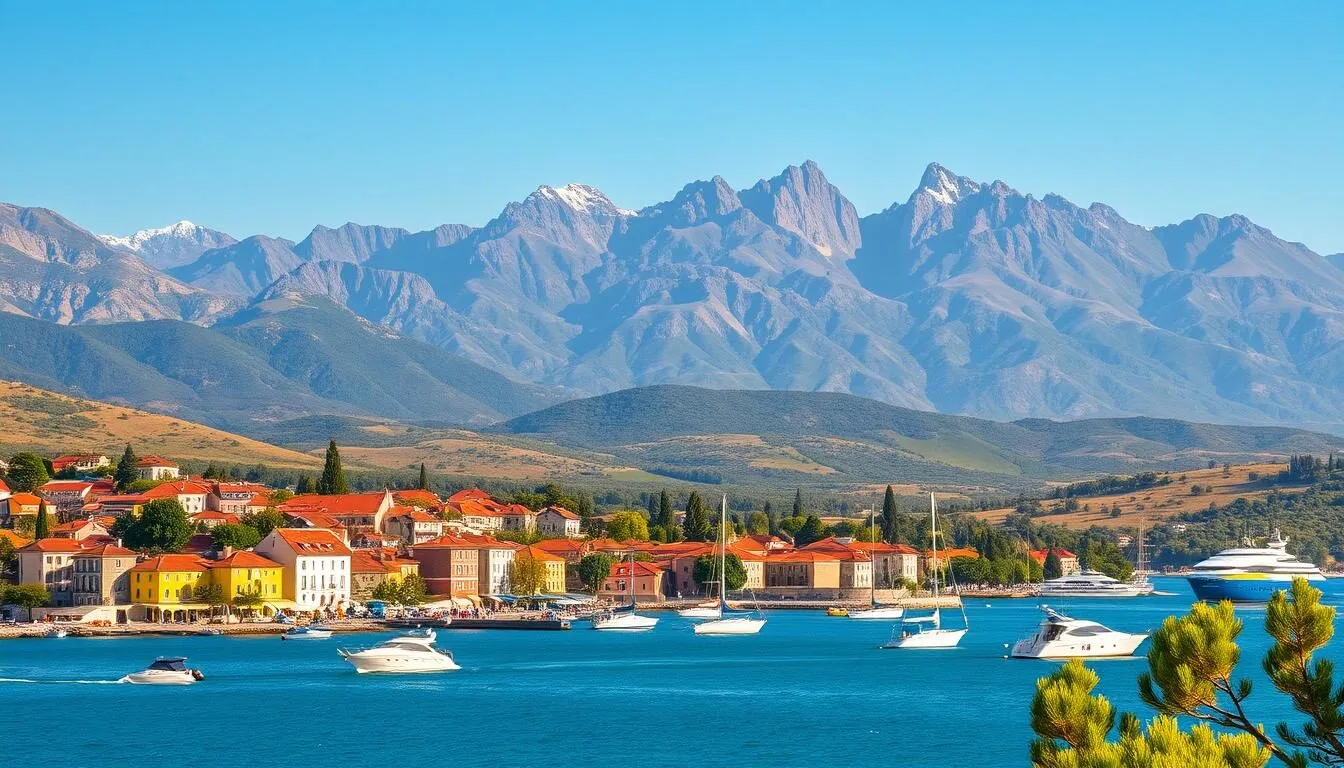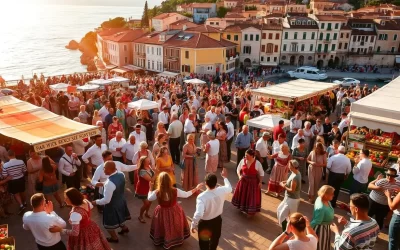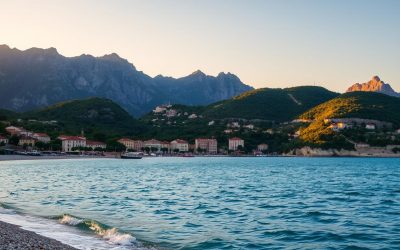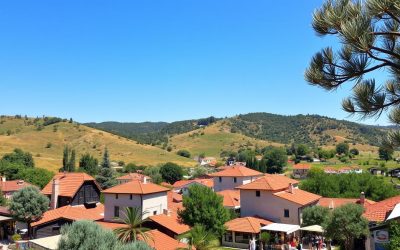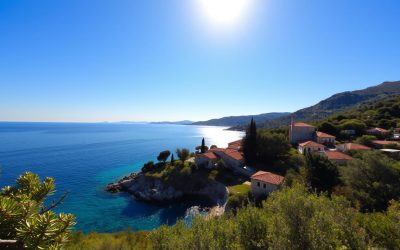Imagine yourself strolling through ancient walled cities, swimming in crystal-clear waters at stunning beaches, and exploring a country that’s both rich in history and breathtakingly beautiful. Croatia has become a gem for travelers, offering a unique blend of culture, adventure, and relaxation.
As you plan your trip to this Mediterranean paradise, you’re likely wondering about the best time to visit. Late spring and early autumn are ideal, offering pleasant weather without the summer crowds. With over 1,200 islands and eight national parks, Croatia is a destination that promises an unforgettable experience.
Whether you’re looking for a short city break, an island-hopping adventure, or a comprehensive tour, this guide will help you make the most of your days in this beautiful country. Get ready to discover the top picks for your next travel adventure.
Discovering Croatia’s Unique Charm
As you plan your trip to Croatia, you’ll discover a country that seamlessly blends history, culture, and natural beauty. With its rich heritage and stunning landscapes, Croatia has become a top destination for travelers seeking an authentic European experience.
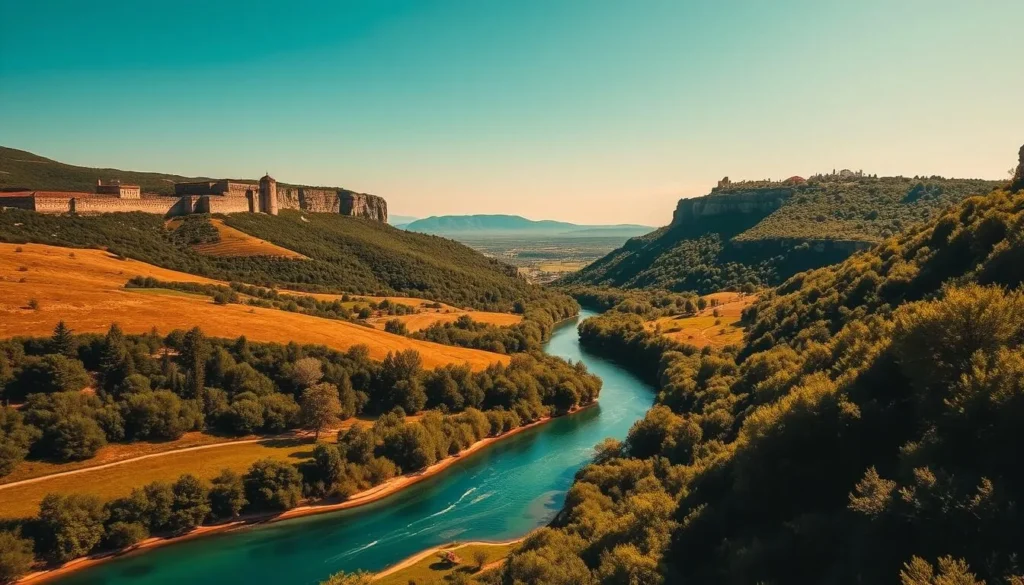
Why Croatia Has Become a Top European Destination
Croatia has transformed into one of Europe’s tourism powerhouses, attracting over 15 million visitors annually. The country’s unique appeal lies in its blend of Mediterranean charm, Slavic culture, and Central European influences, creating a distinctive atmosphere. You can explore the historic old town centers, enjoy the local cuisine, and relax on the beautiful island beaches.
The country’s turbulent history has left behind a fascinating architectural legacy, visible in the city centers and historic sites. From Roman ruins to Venetian architecture, each place tells a story of the past. As you travel through Croatia, you’ll discover the rich history that has shaped this beautiful country.
| Aspect | Description | Highlights |
|---|---|---|
| History | Rich cultural heritage | Roman ruins, Venetian architecture |
| Nature | Stunning coastline and islands | Over 1,200 islands, beautiful beaches |
| Cuisine | Blend of Mediterranean and Central European flavors | Fresh seafood, local wines, traditional dishes |
What Makes Croatia Special
Croatia’s coastline stretches for nearly 1,800 kilometers along the Adriatic Sea, dotted with over 1,200 islands. The way Croatia combines natural beauty with cultural heritage makes it a perfect destination for travelers. You can enjoy island-hopping adventures, explore historic towns, and savor the local food, making your trip to Croatia an unforgettable experience.
From the capital city’s vibrant atmosphere to the peaceful island life, Croatia offers a diverse range of experiences. Whether you’re looking to relax on the coast, explore ancient history, or enjoy the local cuisine, Croatia has something for everyone. As you travel through this beautiful country, you’ll find that the blend of cultures and landscapes creates a unique and captivating travel experience.
Best Time to Visit Croatia
When planning your trip to Croatia, understanding the best time to visit is crucial for a memorable experience. Croatia has a long tourist season, especially along the coast, generally running from May through September. The country’s diverse climate means that the ideal time to visit can vary based on your plans.
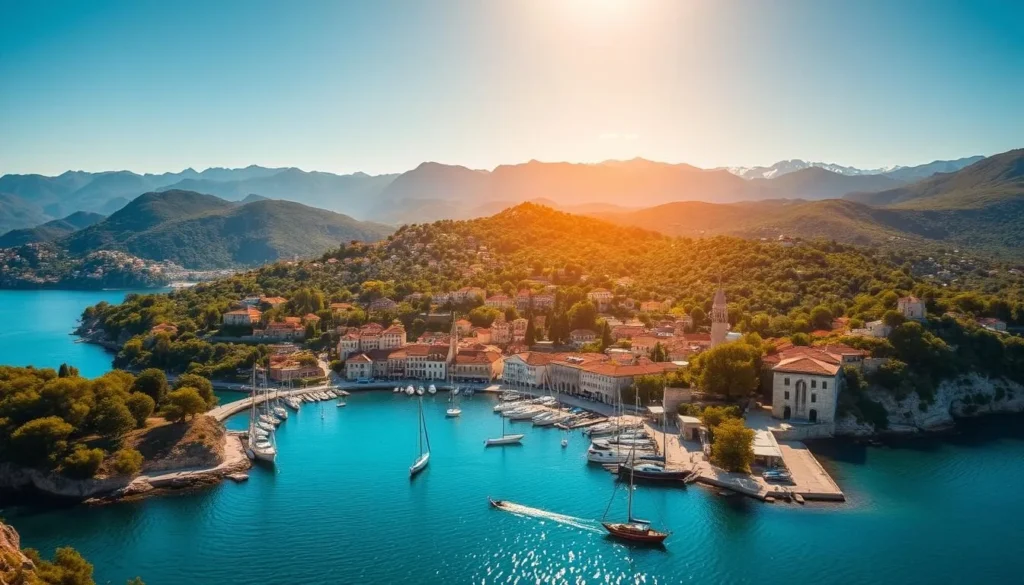
Shoulder Season: May and September
May and September are considered the ideal months to visit Croatia, offering warm temperatures (20-25°C/68-77°F), lower prices, and fewer tourists in popular coastal towns and island destinations. If you’re planning to visit national parks like Plitvice Lakes, these shoulder seasons provide more comfortable hiking temperatures and better photo opportunities without the summer haze. Renting a car during this time can offer maximum flexibility, especially when bus schedules may be reduced and ferry services to smaller islands less frequent.
Summer Season: June to August
Summer brings hot weather perfect for beach activities and swimming in Croatia’s crystal-clear waters. However, this period also attracts peak crowds and prices, especially in July and August when Europeans take their summer holidays. If you’re looking for a vibrant atmosphere and don’t mind the crowds, summer is a great time to enjoy the beaches and water activities. Hvar island, known for its over 120 days of sun per year, is a particularly good choice during this time.
Off-Season: October to April
Visiting Croatia during the off-season (October to April) can be a different experience. While coastal cities and islands may be quiet with many businesses closed, inland destinations like Zagreb come alive with Christmas markets and winter activities. If you’re looking for a more relaxed atmosphere and lower prices, consider visiting during the shoulder months of April and October. Be prepared for potential Bora winds during the winter months, especially in the southern Adriatic islands.
Getting Around Croatia
Traveling through Croatia can be a breeze if you know the best ways to get around. With its stunning coastline and numerous islands, understanding your transportation options is key to making the most of your trip.
Renting a Car in Croatia
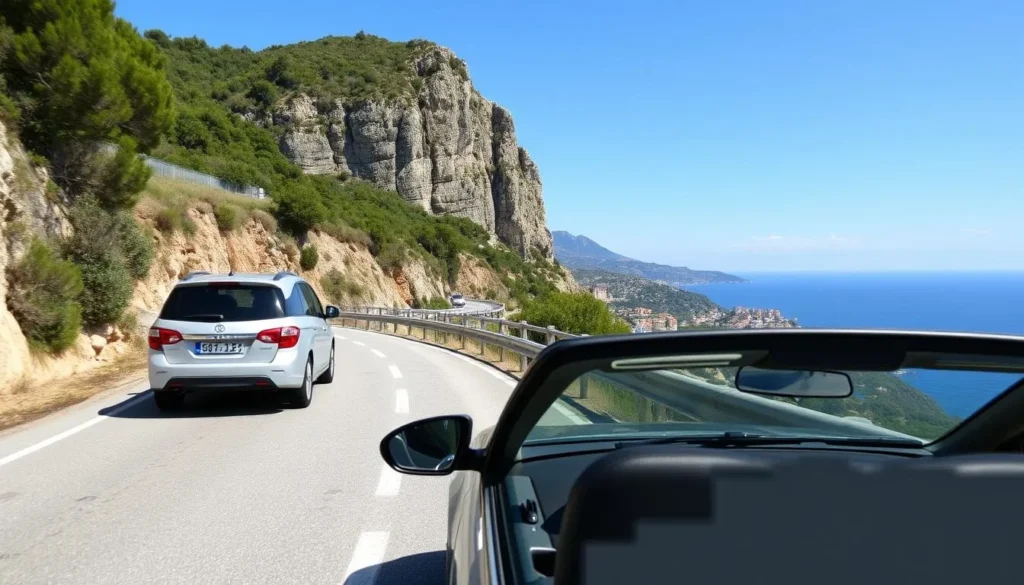
Renting a car is the most flexible way to explore Croatia, giving you the freedom to visit smaller towns and hidden beaches that aren’t accessible by public transportation. Prices are reasonable outside the peak summer season, making it a great option for those who want to travel at their own pace.
Public Transportation Options
Croatia’s public bus network is extensive and relatively affordable, connecting all major cities and many smaller towns. While schedules can be limited in the off-season, it’s a convenient way to travel between destinations without the hassle of driving.
Island Hopping by Ferry
Island hopping is an essential Croatian experience, with ferry services operated primarily by Jadrolinija connecting the mainland to all inhabited islands. Advance booking is highly recommended during summer to ensure availability.
Whether you’re taking a day trip to a nearby island or traveling along the coast, Croatia’s ferry services offer a scenic and enjoyable way to see the country’s beautiful islands and coastline.
Explore Croatia’s Stunning National Parks
With eight national parks, Croatia showcases its incredible natural beauty, from cascading waterfalls to mountain ranges and island ecosystems. These parks are a testament to the country’s diverse landscapes and offer something for every nature lover and adventurer.
Plitvice Lakes National Park
Plitvice Lakes National Park is Croatia’s oldest and most famous national park, featuring 16 interconnected lakes in stunning turquoise and emerald colors. The lakes are connected by a series of waterfalls and wooden walkways, creating a breathtaking landscape that is both serene and awe-inspiring.
To avoid the intense summer crowds, consider arriving at the park at opening time (7 AM), visit the Upper Lakes which are more spread out, or hike the 12-mile K trail with a guide to escape the tourist masses.
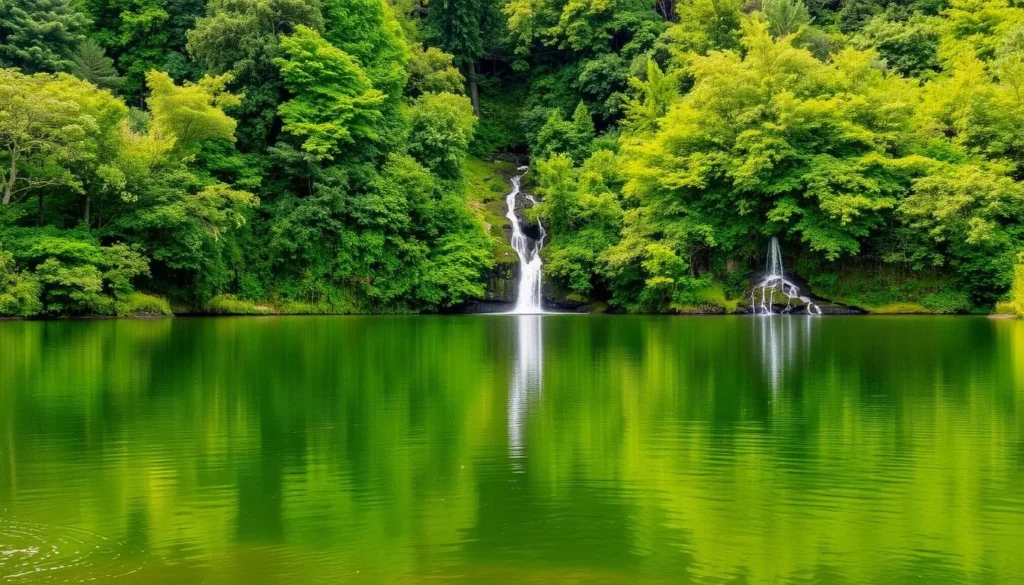
Krka National Park
Krka National Park offers a similar yet distinct experience compared to Plitvice, with its magnificent waterfalls and a more open landscape. The park is home to Europe’s largest travertine waterfall, Skradinski Buk, and features a series of boardwalks and trails that lead you across the cascades, providing an intimate connection with nature.
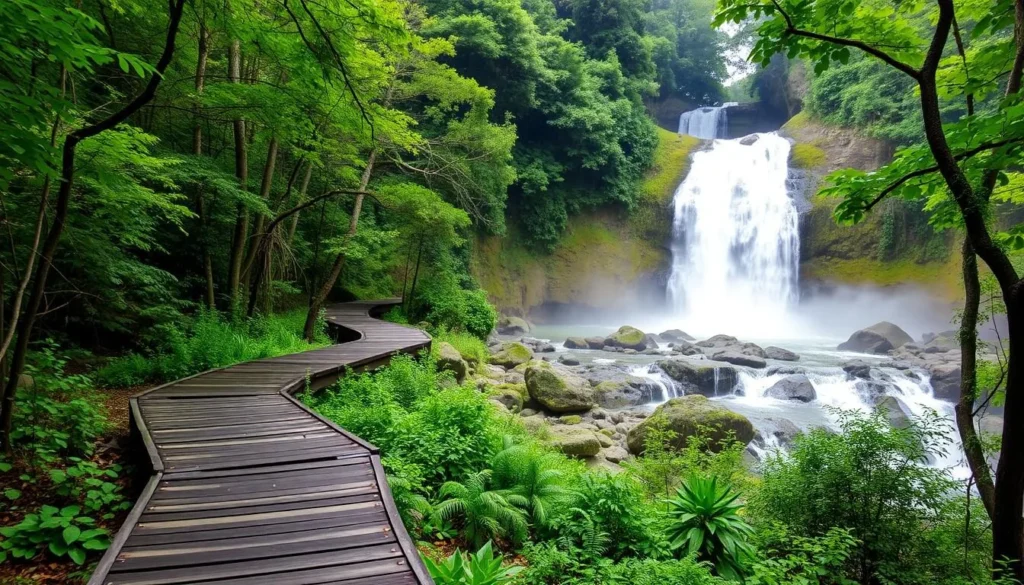
Paklenica National Park
For those seeking adventure, Paklenica National Park provides a completely different experience, with towering limestone mountains reaching heights of 5,700 feet. This park is a haven for hikers and rock climbers, offering trails and climbing routes that cater to all levels of experience.
Croatia’s national parks are not just destinations; they are experiences that enrich your travel, offering a glimpse into the country’s natural beauty and diversity. Whether you’re exploring the lakes, hiking through forests, or climbing mountains, each park provides a unique and unforgettable journey.
Discover Historic Coastal Cities
The historic coastal cities of Croatia offer a unique blend of ancient architecture, rich history, and vibrant culture. As you explore these cities, you’ll discover well-preserved old towns, imposing defensive walls, and a deep sense of history that permeates every aspect of the local culture.
Dubrovnik: The Pearl of the Adriatic
Dubrovnik is one of the most beautiful cities in Croatia, renowned for its medieval core and imposing city walls. The city’s clifftop location and seaside views make it almost unbelievably picturesque. You can walk along the 2km city walls circuit, taking in the spectacular views of the terracotta rooftops and the azure sea beyond.
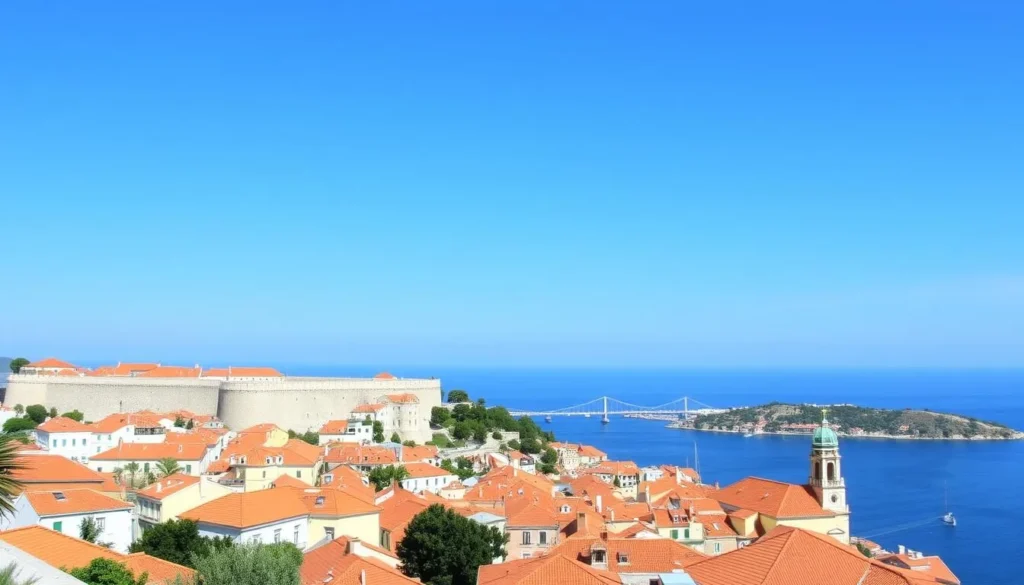
Split and Diocletian’s Palace
Split is centered around the remarkable Diocletian’s Palace, a UNESCO World Heritage site built in the 4th century as a retirement home for the Roman Emperor Diocletian. The palace now forms the living heart of the city, with narrow streets and historic buildings that showcase the city’s rich history. You can explore the palace and its surroundings, taking in the vibrant atmosphere and historic landmarks.
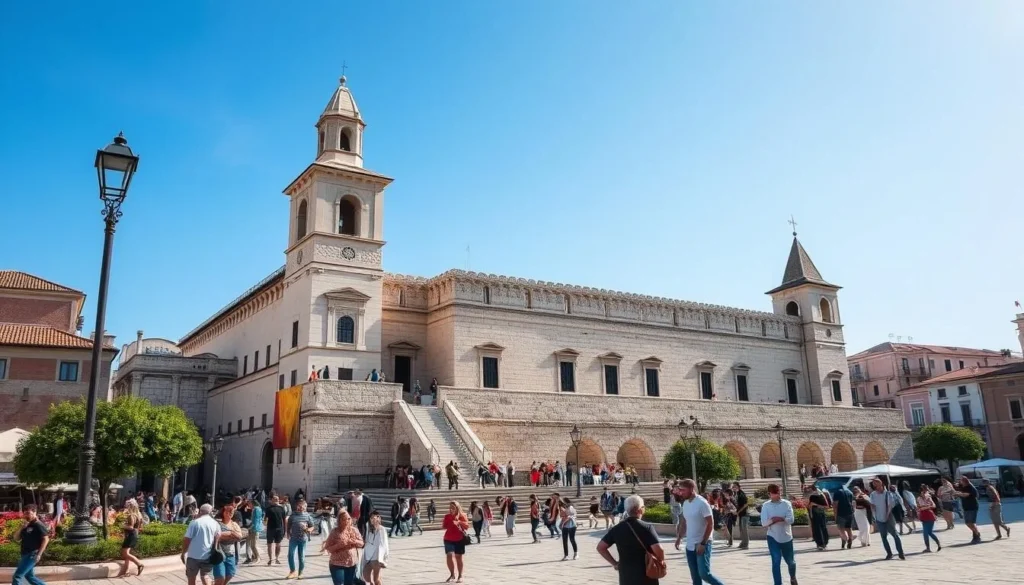
Zadar’s Ancient and Modern Attractions
Zadar offers a perfect blend of ancient Roman ruins and innovative modern attractions. The city’s Roman Forum dates back to the 1st century BC, while the Sea Organ and Sun Salutation are contemporary art installations that harness the power of nature. You can explore the old town, visit the Roman Forum, and experience the unique modern attractions that make Zadar a fascinating destination.
Croatia’s coastal cities are not just historic relics; they are vibrant living communities where locals still reside within the ancient walls, creating an authentic atmosphere. Each city has its own distinct character, from Dubrovnik’s elegance to Split’s youthful energy and Zadar’s relaxed vibe. Visiting these cities is a journey through history, culture, and natural beauty, making for an unforgettable trip.
Island Hopping Adventures
With over 1,200 islands, Croatia offers a diverse island-hopping adventure like no other. You can explore luxurious resorts, untouched nature, and secluded beaches, making it a perfect destination for various types of travelers.
Hvar: Croatia’s Sunniest Island
Hvar stands out as Croatia’s sunniest island, boasting an average of 2,800 hours of sunshine per year. The town of Hvar features elegant Venetian architecture, a picturesque harbor filled with yachts, and a vibrant nightlife scene that attracts celebrities and party-seekers during the summer months.
Getting to Hvar is easy, with several daily ferries connecting it to Brač and Split. The island’s coast is dotted with ancient towns, while the interior is full of small villages producing renowned agricultural products like lavender, olives, and wine.
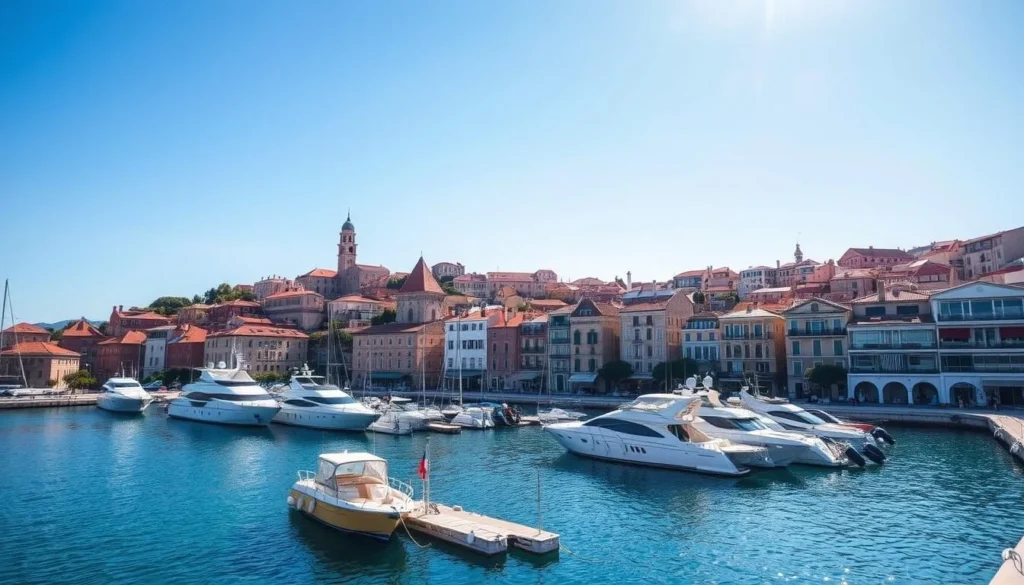
Brač and the Famous Golden Horn Beach
Brač island is home to Croatia’s most famous beach, Zlatni Rat (Golden Horn), a remarkable white pebble beach that changes its shape depending on the winds and sea currents. Its distinctive triangular form extending into crystal-clear turquoise water has become an iconic image of Croatian tourism.
Visitors flock to the town of Bol on Brač to experience this natural wonder, making it a must-visit destination during your island-hopping adventure.
Korčula: Marco Polo’s Birthplace
Korčula claims to be the birthplace of Marco Polo and features a beautiful medieval old town often called “Little Dubrovnik.” The town is surrounded by impressive stone walls and towers but attracts far fewer tourists compared to Dubrovnik.
Korčula offers a more authentic and relaxed atmosphere, with excellent local wines to enjoy during your visit. It’s a great alternative for those looking to explore a less crowded but equally historic destination.
The best way to explore multiple islands is either by joining an organized boat tour from coastal cities like Split or Dubrovnik, or by creating your own itinerary using the public ferry network. Each island has its own character: Hvar is glamorous and trendy, Brač offers excellent beaches and swimming opportunities, while Korčula provides a more authentic and relaxed atmosphere.
Zagreb: Croatia’s Vibrant Capital
As you explore Croatia, don’t miss the opportunity to experience the unique charm of its capital city, Zagreb. Unlike the coastal destinations, Zagreb offers a distinct Central European flair, with its impressive Austro-Hungarian architecture, vibrant cafe culture, and historic landmarks.
Upper Town Historic Sights
The Upper Town, or Gornji Grad, is the historic heart of Zagreb, featuring iconic landmarks like St. Mark’s Church with its colorful tiled roof, the Lotrščak Tower where a cannon fires daily at noon, and the Stone Gate with its revered painting of the Virgin Mary. As you wander through the old town, you’ll discover charming streets, historic buildings, and picturesque views.
Museums and Cultural Attractions
Zagreb is home to some of Croatia’s best museums, including the Museum of Broken Relationships, a unique institution that showcases personal objects and stories from failed relationships. You can also visit the Archaeological Museum to explore the region’s rich history. With a variety of cultural attractions, Zagreb offers a depth of experience that goes beyond its size.
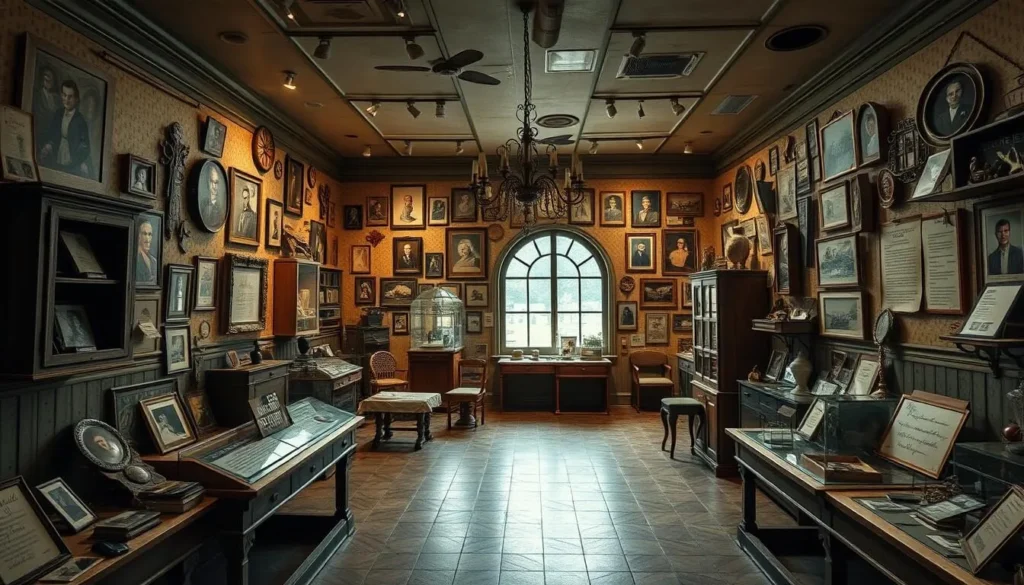
Dolac Market and Local Life
No visit to Zagreb is complete without a trip to the vibrant Dolac Market, established in 1930. This bustling marketplace is a feast for the senses, with fresh produce, cheeses, and local specialties on offer. As you sample the local cuisine, you’ll get a glimpse into the daily life of Zagreb’s residents, making for a truly authentic experience.
Croatia: Best Things to Do – Top Picks for Foodies
From truffles to wine, Croatia’s food scene is a must-explore for any traveler. Croatia’s diverse culinary scene deserves a prominent place on your list of things to do, with each region offering distinctive flavors influenced by Italian, Hungarian, Turkish, and Austrian traditions.
Truffle Hunting in Istria and Split
Truffle hunting is a must-do experience, available not only in the famous Istria region but also surprisingly near coastal cities like Split, where you can join local families and their trained dogs on an exciting hunt through the forests. The ultimate farm-to-table experience awaits after your truffle hunt, as freshly unearthed truffles are transformed into a multi-course lunch showcasing these prized ingredients in traditional Croatian dishes.

Croatian Wine Tasting Experiences
Croatian wines are gaining international recognition, with indigenous varieties like Plavac Mali, Malvazija, and Pošip offering unique tasting experiences. Vineyard tours on islands like Korčula, Hvar, and the Pelješac peninsula provide spectacular sea views along with excellent wines.
Cooking Classes and Food Tours
Cooking classes in coastal towns give you the opportunity to learn how to prepare traditional Dalmatian dishes like black risotto, peka (meat and vegetables cooked under a bell-shaped lid), and fresh seafood specialties. Joining a food tour in cities like Split or Dubrovnik allows you to sample local specialties while learning about the cultural and historical significance of Croatian cuisine from knowledgeable guides.
Some of the top experiences for foodies in Croatia include:
- Truffle hunting with local families and their trained dogs
- Wine tasting tours on islands and peninsulas
- Cooking classes to learn traditional Croatian dishes
- Food-focused day trips to oyster farms, olive oil producers, and cheese makers
- Joining a food tour to sample local specialties and learn about Croatian cuisine
Whether you’re exploring the old town, visiting local markets, or taking a day trip to nearby islands, Croatia’s culinary delights are sure to leave a lasting impression on your travel experience.
Adventure Activities in Croatia
Adventure awaits in Croatia, where you can explore national parks, islands, and more. Croatia offers an impressive array of adventure activities that allow you to experience the country’s diverse landscapes in active, engaging ways.
Biking Through Croatian Landscapes
Biking is one of the best ways to explore Croatia’s varied terrain, from dedicated cycling paths around national parks like Krka National Park and Plitvice Lakes to scenic coastal routes and challenging mountain trails. You can rent a bike and hire a guide to bike around the island of Hvar for a day, exploring small coastal villages and stopping for ruins, lunch, and local treats.
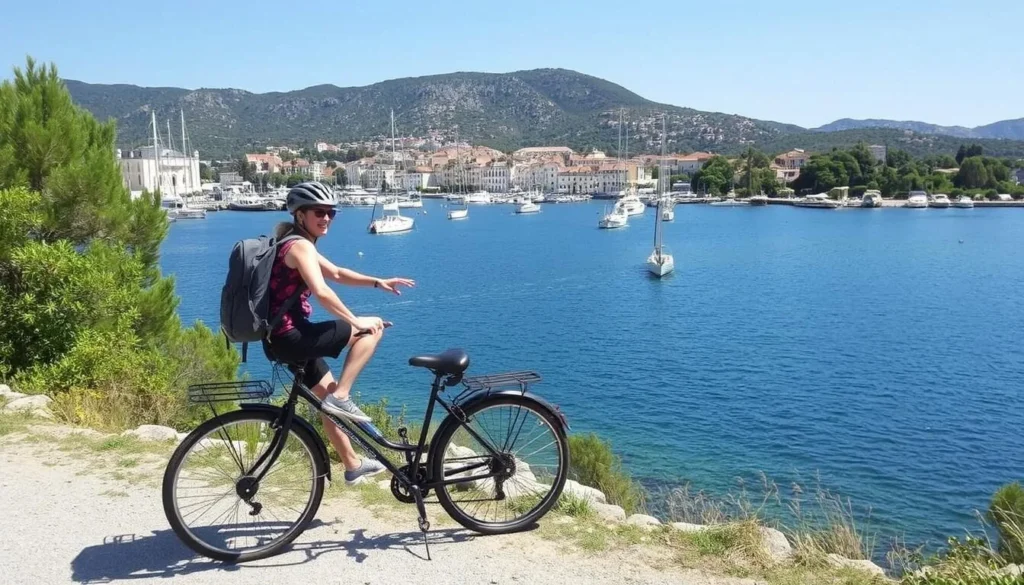
Kayaking Along the Adriatic Coast
Sea kayaking tours provide a unique perspective of Croatia’s dramatic coastline, allowing you to paddle into hidden caves, discover secluded beaches inaccessible by car, and view ancient city walls from the water. You can join a guided tour to explore the islands and coastlines.
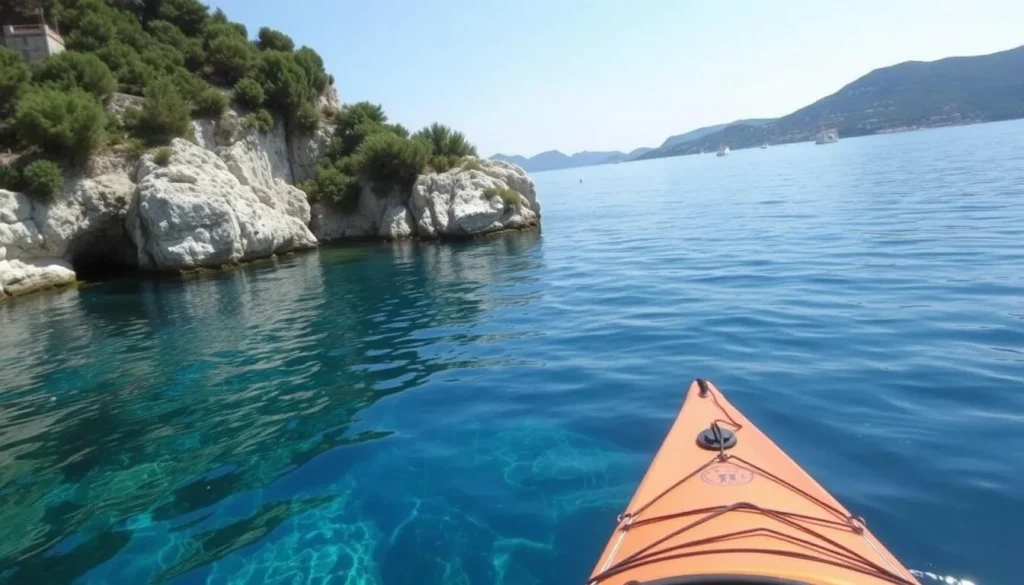
Hiking in Croatia’s Mountains
The country’s mountainous interior offers excellent hiking opportunities, particularly in places like Paklenica National Park, where trails range from easy walks to challenging climbs with rewarding panoramic views. You can hike through the mountains and enjoy the natural beauty of Croatia.
In addition to biking, kayaking, and hiking, Croatia offers other adventure activities such as white water rafting on rivers like the Cetina and Zrmanja, and snorkeling or diving in the clear Adriatic waters. These activities can be easily arranged as day tours from major tourist hubs, with most companies providing all necessary equipment, transportation, and expert guides.
Game of Thrones Filming Locations
If you’re a Game of Thrones enthusiast, you’ll love exploring Croatia’s filming locations. The country’s stunning landscapes and historic cities made it an ideal location for the hit series.
Dubrovnik as King’s Landing
Dubrovnik served as the primary filming location for King’s Landing, with its ancient city walls and historic buildings providing the perfect backdrop for the capital of the Seven Kingdoms. You can walk along the old town walls, visit Fort Lovrijenac, and explore the narrow streets that were featured in many iconic scenes.
The Jesuit Staircase in Dubrovnik’s old town became famous as the setting for Cersei’s walk of shame, while Fort Lovrijenac doubled as the Red Keep.
Šibenik and Other Filming Sites
If you’re looking for a less crowded alternative to Dubrovnik, consider visiting Šibenik, a charming town along the Adriatic Coast. The stunning Cathedral of St. James in Šibenik was featured as the Iron Bank of Braavos in the show. You can spend a day exploring the old town and learning about its rich history.
Other filming locations in Croatia include Split’s Diocletian’s Palace, Klis Fortress, and the islands of Lokrum and Brač. You can take a trip to these islands and explore the ruins and landscapes that were featured in the series.
Whether you’re a die-hard fan or just curious about the show, visiting Croatia’s Game of Thrones filming locations is an unforgettable experience. You can explore the city walls, visit ancient ruins, and enjoy the stunning natural beauty of the surrounding island and park areas.
Central Istria: Croatia’s Tuscany
Central Istria beckons with its unspoiled beauty, a land where history and nature blend seamlessly. This region is a haven for those seeking an authentic Croatian experience, far from the crowds that often flock to the coastal areas.
Charming Hilltop Towns
The region is dotted with picturesque medieval hilltop towns like Motovun, Grožnjan, and Hum, each perched dramatically on hilltops with ancient walls and cobblestone streets. These towns offer a glimpse into Istria’s rich history and architectural heritage. As you wander through their narrow streets, you’ll discover charming squares, historic buildings, and quaint shops.
In Motovun, you can enjoy spectacular views from its walls and experience the town’s vibrant cultural scene, including an internationally renowned film festival each summer.
Local Gastronomy and Olive Oil
Istria’s food scene is one of Croatia’s most distinctive, blending Italian influences with local traditions to create specialties like fuži (hand-rolled pasta), pršut (dry-cured ham), and dishes featuring the region’s famous truffles. Truffle hunting in the forests of central Istria is a highlight for food enthusiasts, with the region producing some of the world’s finest white and black truffles.
After a truffle hunt, enjoy a truffle-focused lunch at a local family restaurant, savoring the flavors of Istria’s culinary delights. Additionally, olive oil production has ancient roots in Istria, with many small producers offering tastings of some of the world’s highest-rated extra virgin olive oils.

Beach Experiences in Croatia
From secluded coves to bustling beach towns, Croatia’s beaches have something for everyone. With its extensive Adriatic coastline, Croatia offers a diverse range of beach experiences that cater to different tastes and preferences.
Best Beaches on the Mainland
Croatia’s mainland boasts some of the most beautiful and accessible beaches. You can enjoy the sun, sea, and sand at Bačvice in Split, famous for the local game of picigin, or relax at Banje Beach in Dubrovnik, which offers a luxurious beach experience. The Makarska Riviera is another hotspot, with long stretches of shore perfect for a day of swimming and sunbathing. When visiting these beaches, you can easily get there by car, making them ideal for families and those who prefer not to island-hop.
- Bačvice Beach in Split: Known for its shallow waters and lively atmosphere.
- Banje Beach in Dubrovnik: Offers luxurious amenities and stunning views.
- Makarska Riviera: Features long pebble beaches and crystal-clear waters.
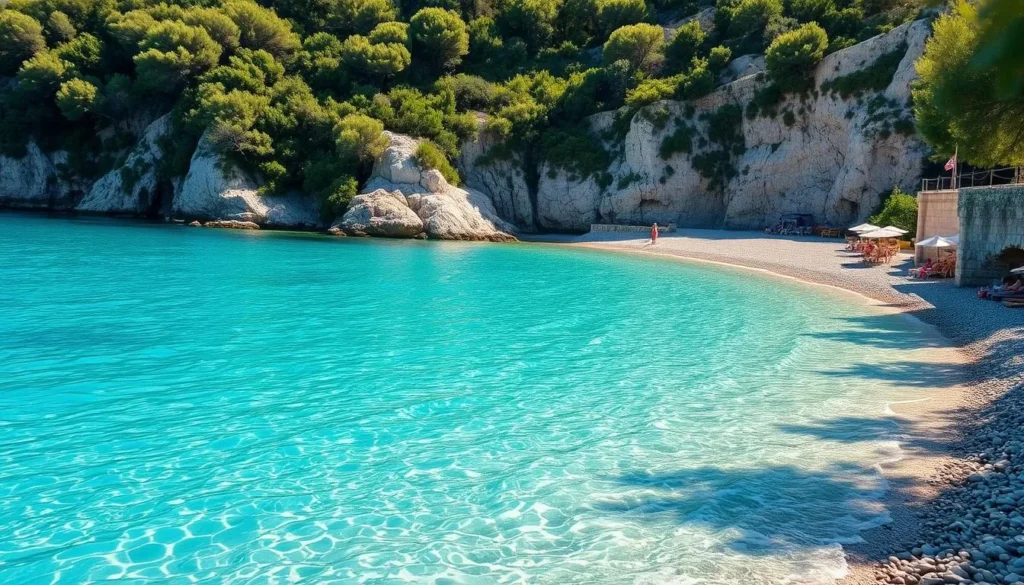
Hidden Island Beaches
For those seeking a more secluded beach experience, Croatia’s islands are home to numerous hidden coves and beaches accessible only by boat. Islands like Vis, Lastovo, and the Kornati archipelago offer pristine waters and untouched landscapes. Renting a small boat for the day allows you to discover these secluded spots, perfect for a peaceful day of sun and swimming. You can explore the island of Brač, where the famous Zlatni Rat (Golden Horn) beach is located, known for its unique shape that changes with the wind and currents.
- Zlatni Rat on Brač island: A distinctive white pebble spit that extends into the sea.
- Vis island: Offers secluded beaches and crystal-clear waters.
- Kornati archipelago: Features numerous hidden coves and beaches.
Unique Croatian Experiences
Beyond its stunning landscapes, Croatia offers a plethora of one-of-a-kind experiences. You can immerse yourself in the country’s rich cultural heritage, marvel at its natural beauty, or simply relax in a picturesque setting.
Sea Organ and Sun Salutation in Zadar
In Zadar, you’ll find two unique modern art installations that are worth visiting. The Sea Organ, located along the waterfront, is a musical instrument that plays random notes created by the rolling power of sea waves. Next to it is the Sun Salutation, a large circle of photovoltaic cells that collect solar energy during the day and create a spectacular light show after dark.
Blue Cave on Biševo Island
The Blue Cave on Biševo Island near Vis is a natural phenomenon that is accessible only by organized boat tours. Around midday, when sunlight reflects through an underwater opening, the entire cave is illuminated with an otherworldly blue glow, creating a breathtaking spectacle.
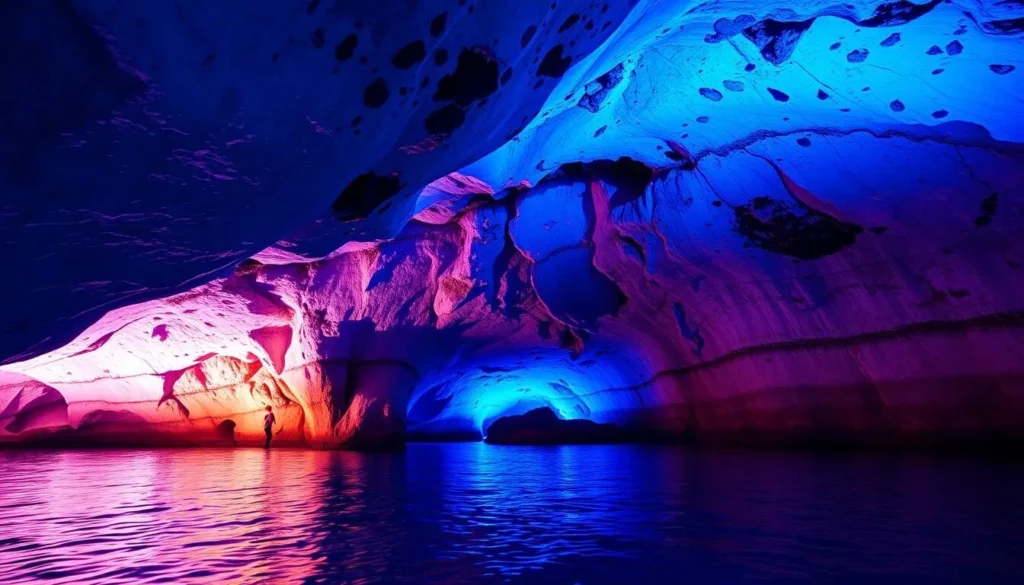
Lavender Fields of Hvar
Hvar’s lavender fields bloom in June and July, covering parts of the island in purple and filling the air with fragrance. You can take guided tours to the best viewing spots and learn about the traditional harvesting and distillation process.
Day Trips to Neighboring Countries
Croatia’s strategic location makes it an ideal base for day trips to neighboring countries, allowing you to experience multiple Balkan cultures during your vacation. With organized tours handling logistics, you can enjoy a hassle-free exploration of the region’s diverse history, architecture, and cuisine.
Mostar, Bosnia and Herzegovina
A day trip to Mostar from Split is highly recommended. This historic town is famous for its iconic Old Bridge (Stari Most), which spans the emerald waters of the Neretva River. As you explore Mostar, you’ll discover a fascinating blend of Ottoman, Mediterranean, and Western European architectural influences.
The old town features cobblestone streets, traditional Turkish houses, and ancient mosques, offering a glimpse into the region’s rich history. Don’t miss the opportunity to watch the traditional bridge divers jump from the Old Bridge, a spectacle that showcases the town’s cultural heritage.
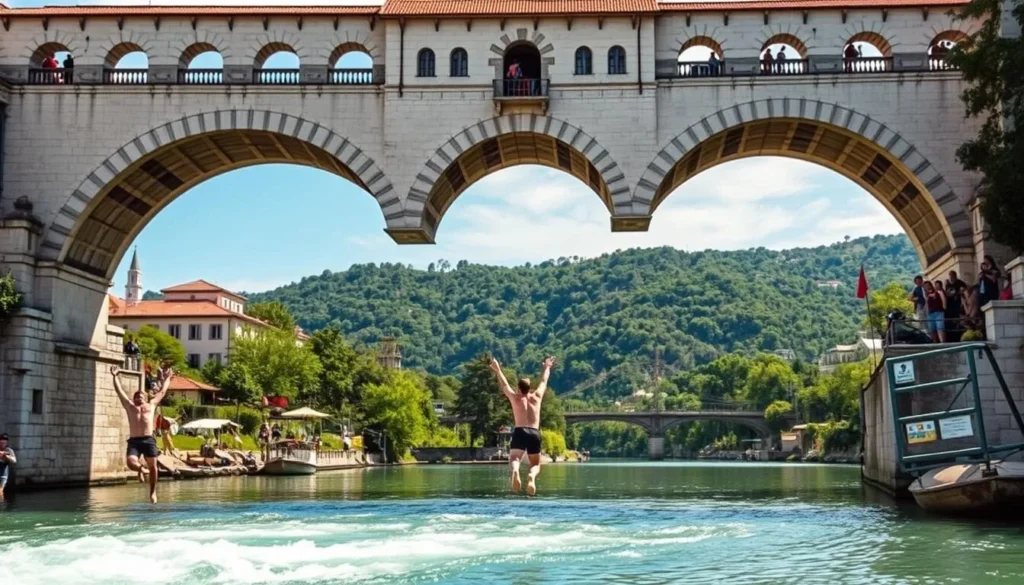
Montenegro’s Bay of Kotor
If you’re staying in Dubrovnik, consider a day trip to Montenegro’s Bay of Kotor. Often compared to a fjord due to its dramatic mountain backdrop, the Bay of Kotor offers spectacular coastal scenery and the beautifully preserved medieval old town of Kotor. As you explore Kotor, you’ll be impressed by its stunning natural beauty and rich history.
Take a stroll along the old town’s walls, visit the Cathedral of Saint Tryphon, and enjoy the local seafood. The Bay of Kotor is a perfect destination for those looking to experience the region’s diverse landscapes and cultural heritage.
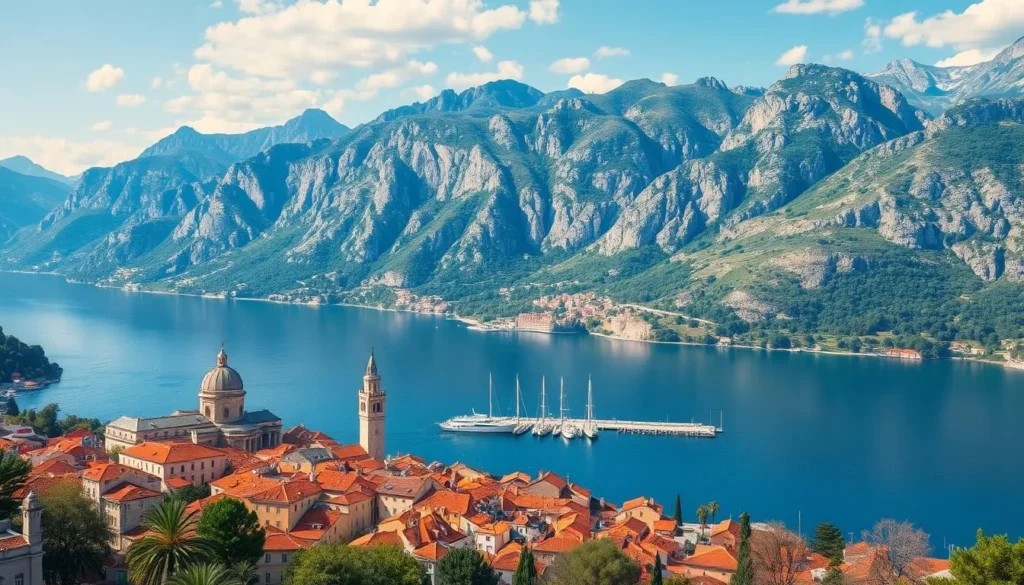
These day trips not only provide a deeper understanding of the Balkan region’s complex history and cultural diversity but also offer a chance to sample local cuisine, from cevapi in Bosnia to seafood in Montenegro. With many tour companies offering organized day trips, you can enjoy a stress-free exploration of the region.
Planning Your Croatia Itinerary
To make the most of your trip to Croatia, it’s essential to plan your itinerary carefully, considering the time of year and your interests. With so much to see and do, you might be wondering where to start.
Croatia’s diverse regions offer a wide range of experiences, from relaxing on beautiful beaches to exploring historic cities. With 7-10 days, you could visit Zagreb and spend some time on the coast, or focus on a single region like Dalmatia or the Northern Adriatic.
7-10 Day Itinerary Suggestions
For a 7-10 day trip, it’s best to focus on either the Dalmatian coast or the northern Istrian peninsula and Zagreb. A popular one-week coastal itinerary includes 2-3 days in Split, with a day trip to Krka National Park, 2 days on an island like Hvar or Brač, and 2-3 days in Dubrovnik.
| Location | Duration | Activities |
|---|---|---|
| Split | 2-3 days | Explore Diocletian’s Palace, visit Krka National Park |
| Hvar or Brač | 2 days | Relax on beaches, enjoy island culture |
| Dubrovnik | 2-3 days | Walk the city walls, explore old town |
Two-Week Comprehensive Tour
If you have two full weeks, you can experience a comprehensive tour of Croatia. Start in Zagreb (2 days), visit Plitvice Lakes National Park (1 day), explore Istria (3 days), continue to the Kvarner region (2 days), then head south to Split (3 days), and finish in Dubrovnik (3 days).
Consider transportation logistics when planning – renting a car gives you the most flexibility for exploring smaller towns and national parks, while buses connect major cities if you prefer not to drive.
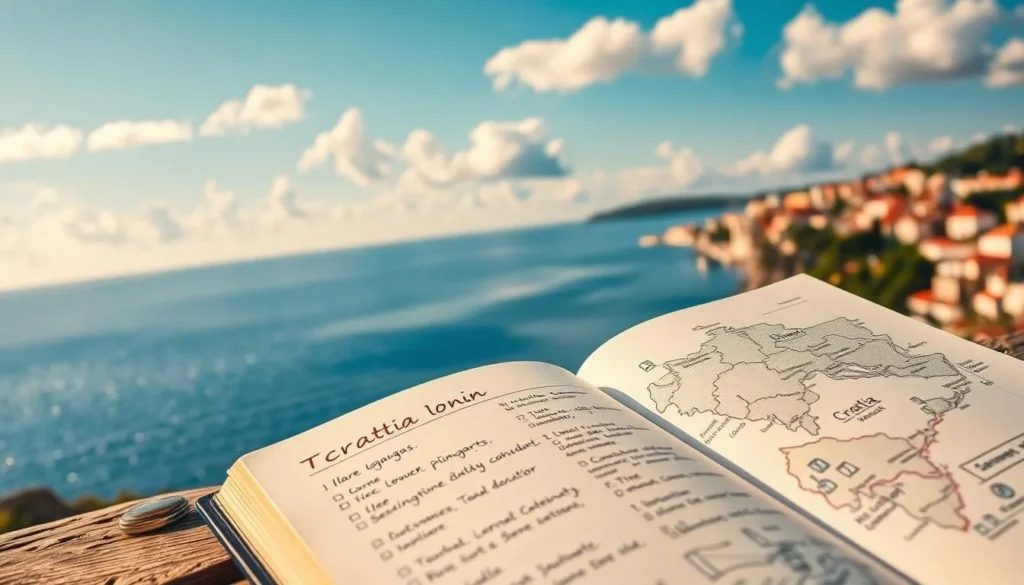
By planning your trip according to your interests and the time of year, you can create a memorable Croatian adventure.
Conclusion: Making the Most of Your Croatian Adventure
Croatia’s diverse charm, from the Adriatic coastline to the country’s historic towns, makes it an unforgettable travel experience. As you’ve discovered throughout this guide,Croatia offers a wealth of experiencesthat cater to all interests and budgets.
While summer brings perfect beach weather, consider visiting in May, June, September, or October when you’ll enjoy pleasant temperatures, lower prices, and significantly fewer crowds at popular attractions like Krka National Park and Dubrovnik’s city walls.
As you explore this beautiful country, make time to connect with locals – Croatians are generally warm and welcoming people proud of their country. Don’t miss the opportunity to indulge in Croatian cuisine, with its unique regional specialties, from fresh seafood to hearty stews and distinctive island products.
To make the most of your Croatian adventure, balance your itinerary between must-see places and lesser-known gems. Whether you’re drawn to Plitvice Lakes, historic towns, or stunning beaches, approaching your trip with flexibility and openness will ensure an unforgettable experience in this extraordinary Mediterranean destination.
With itsbreathtaking beautyand rich history, Croatia is a destination that will leave you with lifelong memories. So pack your bags, and get ready to discover the magic of Croatia!
The above is subject to change.
Check back often to TRAVEL.COM for the latest travel tips and deals.
Here are some Tours & Sightseeing suggestions that might pique your interests!
